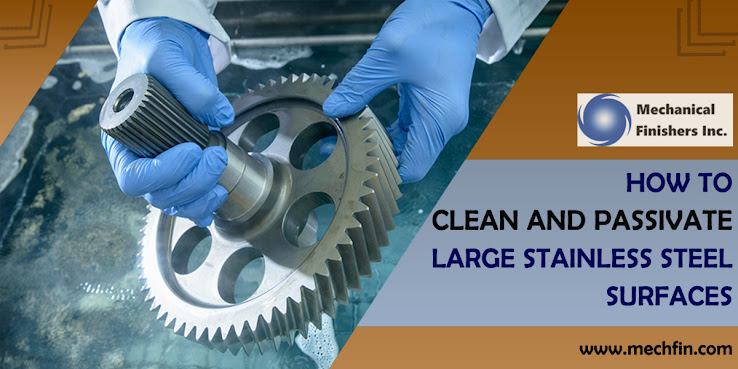How to Clean and Passivate Large Stainless Steel Surfaces
Cleaning and passivating large stainless steel surfaces is an important process to ensure the longevity and durability of the material. Cleaning and passivating large stainless steel surfaces involves several steps. Here are the steps to clean and passivate large stainless steel surfaces:
Pre-Cleaning: Before you start cleaning and passivating the stainless steel surface, you should remove any visible dirt, oil, grease, or other contaminants. You can use a soft cloth or sponge with warm water and mild detergent to clean the surface thoroughly. Rinse the surface with clean water to remove any residual soap or detergent.
Passivation: Passivation is the process of treating the stainless steel surface to remove any surface contaminants and create a protective oxide layer. This layer helps prevent corrosion and rust on the surface. You can use one of several methods to passivate stainless steel, including using a nitric acid solution, citric acid solution, or other specialized passivating chemicals. Follow the instructions provided by the passivating chemical manufacturer to ensure safe and effective use.
Neutralizing: After the passivation process is complete, you should neutralize the surface to remove any residual passivating chemical. This can be done by rinsing the surface thoroughly with clean water or a neutralizing solution.
Drying: After neutralizing, dry the surface thoroughly with a clean, lint-free cloth or air-dry it.
Inspection: Finally, inspect the surface to ensure that it is clean and free of contaminants. You can use a clean, white cloth or tissue to wipe the surface to see if there is any residual dirt or contaminants.
Note: When cleaning and passivating large stainless steel surfaces, it's important to use appropriate personal protective equipment, including gloves, eye protection, and respiratory protection if necessary. Follow all safety precautions and consult with a professional if you're unsure about any step in the process. Always read and follow the manufacturer's instructions carefully to ensure the best results and to avoid any damage to the surface.
Get Help and Support with Your Passivation and Parts Cleaning Services
Passivation and parts cleaning services are important processes in the manufacturing and maintenance of metal components. When choosing a passivation or parts cleaning service provider, it is important to consider their experience, reputation, and certifications. If you would like to assist on passivation protocol from a Specialist, please contact us at Mechanical Finishers Inc with further information about the objects to be treated and someone will be in touch.

Comments
Post a Comment